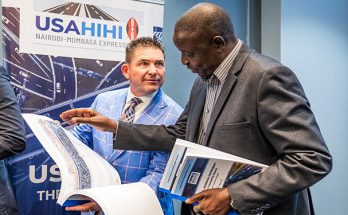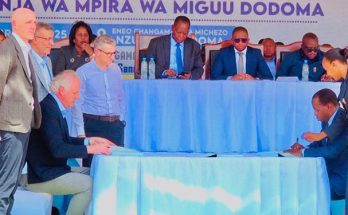
The Aerospace, Maritime and Defence (AMD) Industry Association of South Africa says that exports play a crucial role in the survival of the local defence industry
Isaac Motale, Chairperson of the AMD Export Council Board, speaking at AMD’s 25 year anniversary at the CSIR on 8 June, noted that exports are the biggest contributor to the industry’s revenue. Unlocking potential in East Asia, South America and African markets is key to driving export volume and trade, Motale said, noting that Africa is the primary target market as it has huge potential for growth. AMD’s Africa focus trade missions are on the increasing, with four carried out between January and May this year. In 2016/17, AMD hosted 14 delegations from the continent, excluding those at Africa Aerospace and Defence 2016.
AMD engages with foreign countries as part of sales and marketing efforts and has had industry seminars with countries like Russia, China, Brazil, Finland, Nigeria, Algeria and Tanzania. This month industry will attend an event in Moscow, Russia.
A growing trend is that clients are moving away from straight purchases, and co-development, co-marketing, co-production are key going forward, as strategic partnerships are crucial.
Motale noted that it is challenging to get foreign clients to buy equipment when the South African National Defence Force (SANDF) is not using it themselves, especially as the local market continues to contract.
Motale said it is important to find creative and sustainable ways to solve the funding/financing challenge that confronts most African countries – unlike many other countries, South Africa does not have financing mechanisms/banks for defence. This “makes things hard indeed,” Motale said.
AMD is eying United Nations/African Union missions in Africa and hopes to provide African solutions to African challenges. A number of South African companies already do business with the United Nations, such as Saab and Mechem – the latter is a preferred supplier and has delivered armoured vehicles, amongst others, to UN clients.
Motale compared South African defence industry activity over the last five years. In 2009/2010, the industry employed around 15 000 people and recorded turnover of R12.5 billion a year, with 50% coming from exports. R1 billion went towards research and development. Turnover in 2011/12 was R12.9 billion, including R922 million in tax to the government. In 2012/13 this increased to R13.3 billion in turnover, R1.2 billion in tax and R1.2 billion towards research and development. Exports accounted for 67% of revenue in 2012/13.
For 2015, AMD statistics showed that total turnover was R19 billion; research and development was R1.7 billion and tax to government R2 billion. Employee numbers have remained static at 15 000 over the last several years.
Nearly half of exports are electronics, and around 40% are platforms, mostly in the landward environment.
In addition to supplying things like armoured vehicles, missiles, simulators, UAVs and aircraft components and upgrades to the South African National Defence Force (SANDF), the SA defence industry has supplied products and services to nearly three dozen countries, including artillery systems, armoured vehicles, electronic warfare systems, Mi-24 upgrades, Seeker UAVs, missiles, training systems and more.
On the local front, the local defence industry is benefitting from Project Hoefyster for Badger infantry combat vehicles for the South Africa Army, while Armscor has announced projects Biro and Hotel for new offshore and inshore patrol vessels and a hydrographic survey vessel, but Motale warned that the industry faces compound problems, such as ratings downgrades and a domestic recession. “We are expected to do more with less,” he said.
Motale noted that AMD’s statistics are compiled from its members and the actual totals are likely to be much higher. He noted that defence imports only amount to R3 billion per annum, thus the defence industry is “a massive generator of foreign currency for this country.”
Defence analyst Helmoed Heitman lauded the South African defence industry’s achievements, but called for more funding for the support of the industry. He noted that South Africa has recorded remarkable achievements, such as providing periscopes for most submarines manufactured in Germany and the United States buying thousands of mine-resistant, ambush protected (MRAP) and mine detection vehicles. He said it was unusual for a small country like South Africa to have supplied electronic warfare systems for European aircraft.
Heitman mentioned a study that showed that subsystems developed for the Rooivalk attack helicopter (such as Mokopa anti-tank missiles) amounted to double the development costs. However, he said that Treasury doesn’t understand this and that there is little Department of Defence funding to develop new equipment, and that means fewer exports. “The industry has done incredible things,” he said, “but we need more funding.”



